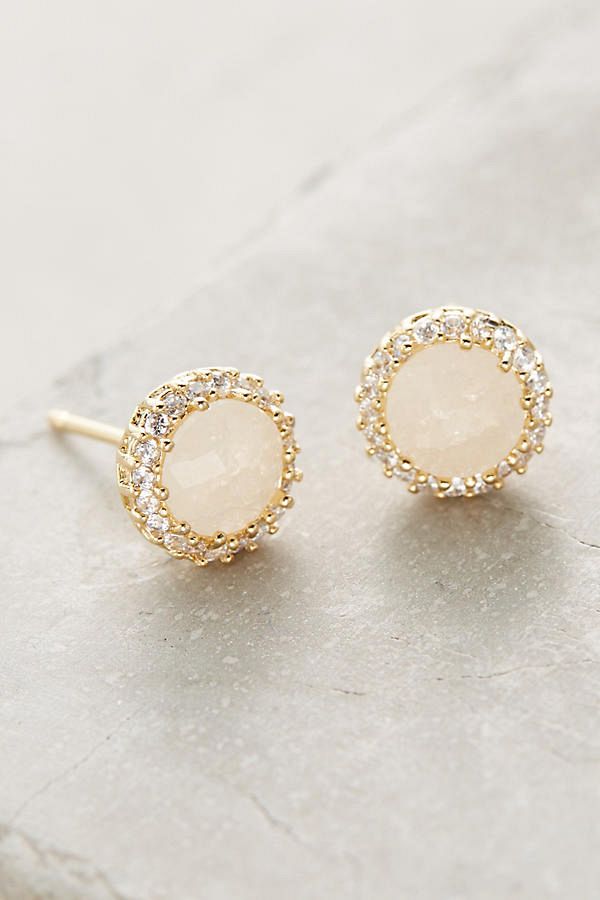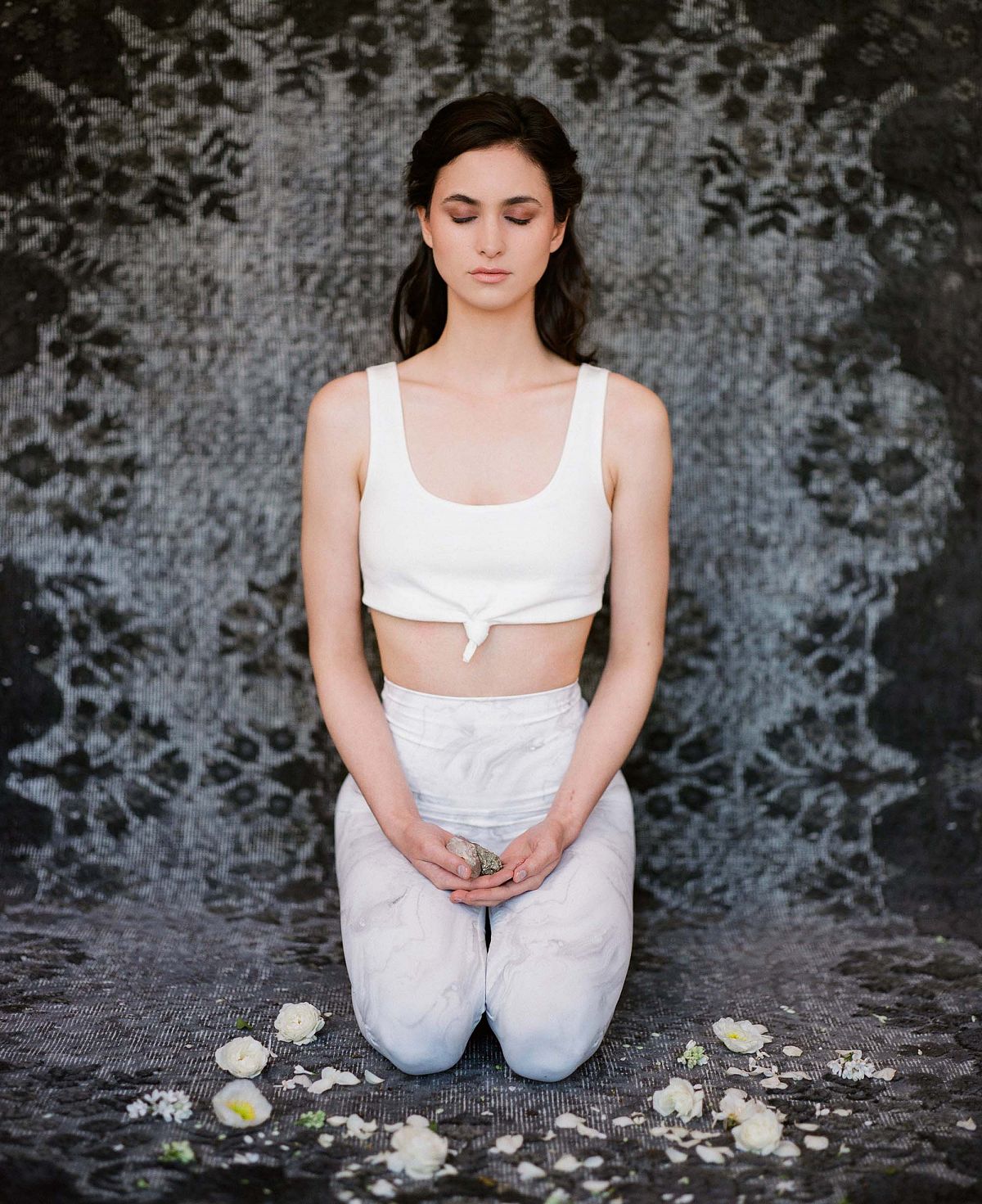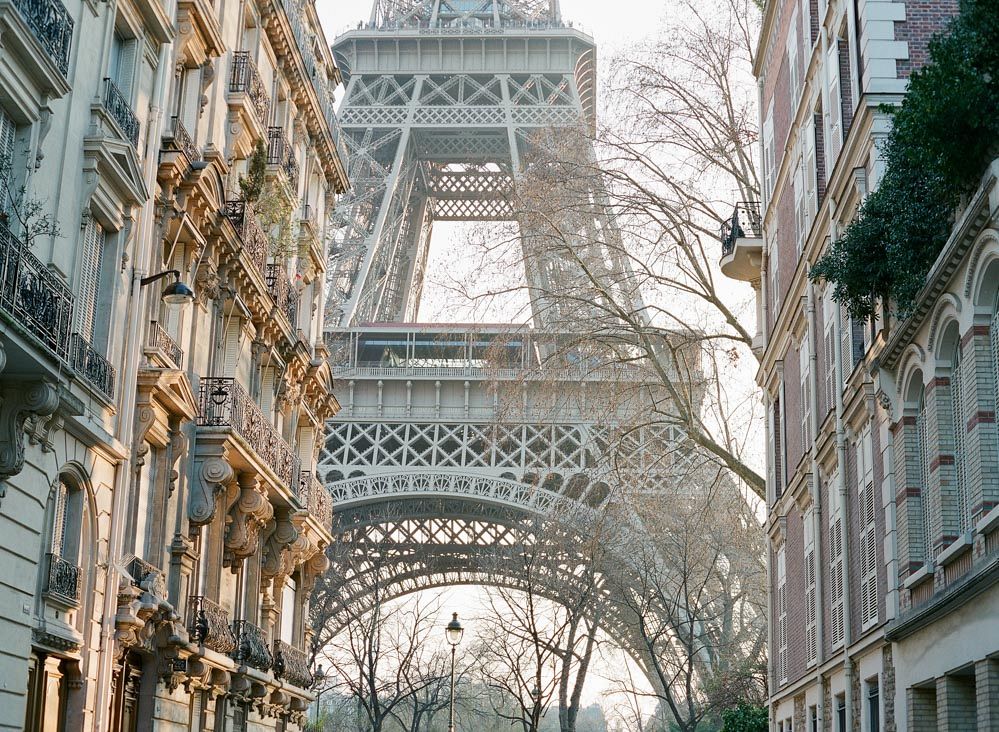Today we’re treated to something a bit different than usual – a thoroughly interesting and enlightening piece by photographer Taylor & Porter about what goes into the making of a styled shoot – or anything wedding-related, really. We learn from dress designer Claire Heddon, ribbon and silk creator Lancaster & Cornish, florist The Garden Gate Flower Company, and stationer Myrtle & Co with a beautiful editorial on the rocky coastline as the result. Enjoy!
From photographer Taylor & Porter: “As a Film Photographer working out of Cornwall; a ruggedly romantic peninsula in the South West of England. I envisioned this story as a celebration of some of the talented Artisans I know here, who’s methods of creativity have many parallels including traditional craft based practises using their hands and an understanding and deep appreciation of their natural organic environment.
I wanted to show the time, energy and love that goes into an Artisan’s work. Often in the wedding industry we see only the beautiful finished products and it’s easy to forget the hours of time and energy that an Artisan spends on their craft.
Drawing on the natural inspiration of our coastal home, this story starts with Lancaster & Cornish who create natural dyes from foraged elements, in this case, camellias combined with iron. The dye Sian Cornish created was used to colour organic silk which was then taken by local bridal designer Claire Heddon to create a bespoke gown in the softest tones. Local organic farmer florists The Garden Gate Flower Company created a bouquet finished with Sian’s ribbons and Calligrapher Myrtle & Co drew inspiration from these tones and created a bespoke suite, using hand made inks and organic papers. Local Jeweller Mirri Damer creates ethical pieces which evoke perfect days spent on rugged beaches and her hand made ring finished our bridal look. I chose to capture this story on one of the most wild and rugged beaches here in Cornwall. It’s power and majesty always provide me with renewed creative energy and so I felt it was the right setting for me to showcase and capture these Artisan’s work, harmonising them together and with the beautiful environment that inspires us all.”
FLORALS
Artisan: The Garden Gate Flower Company
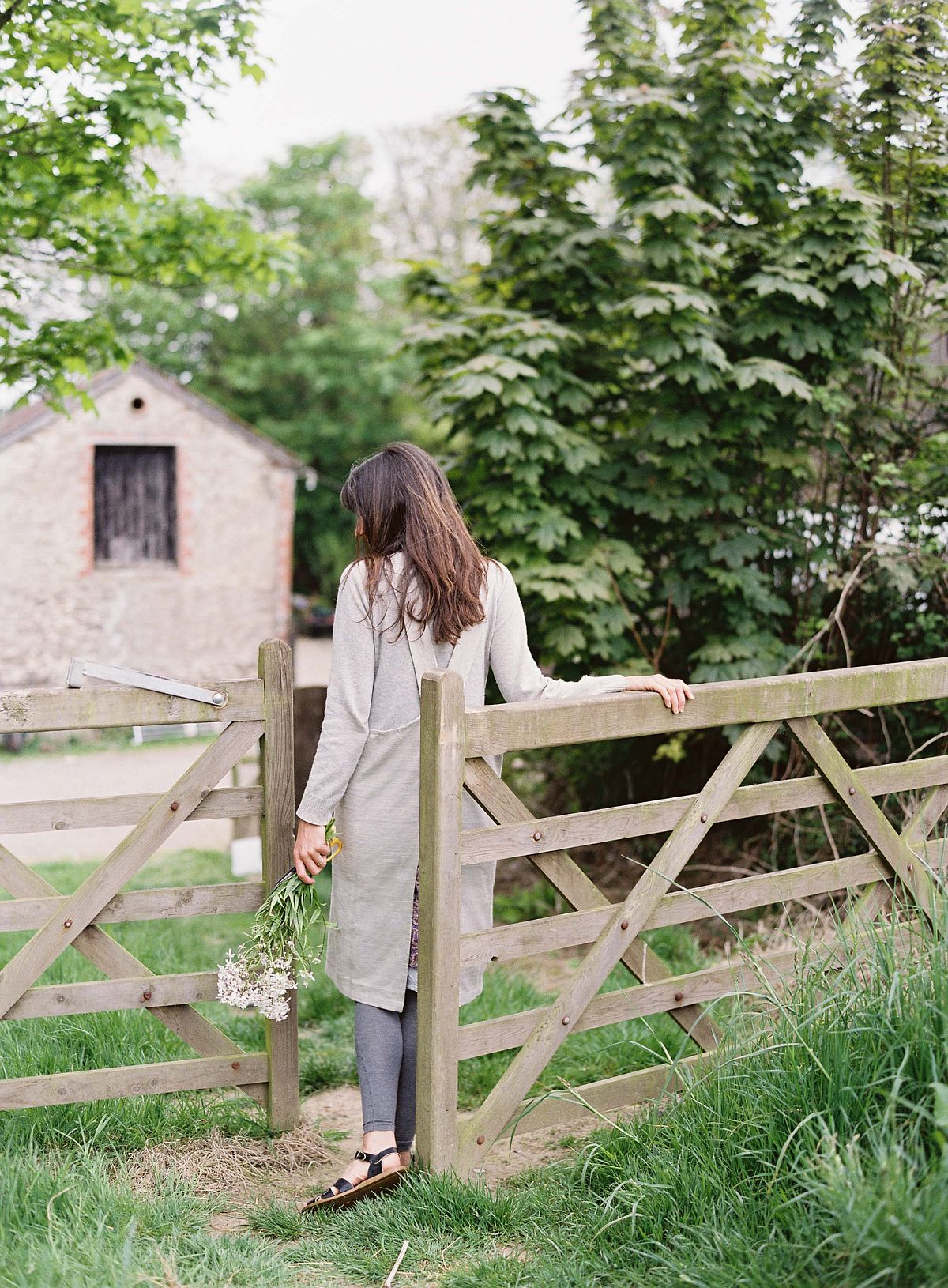
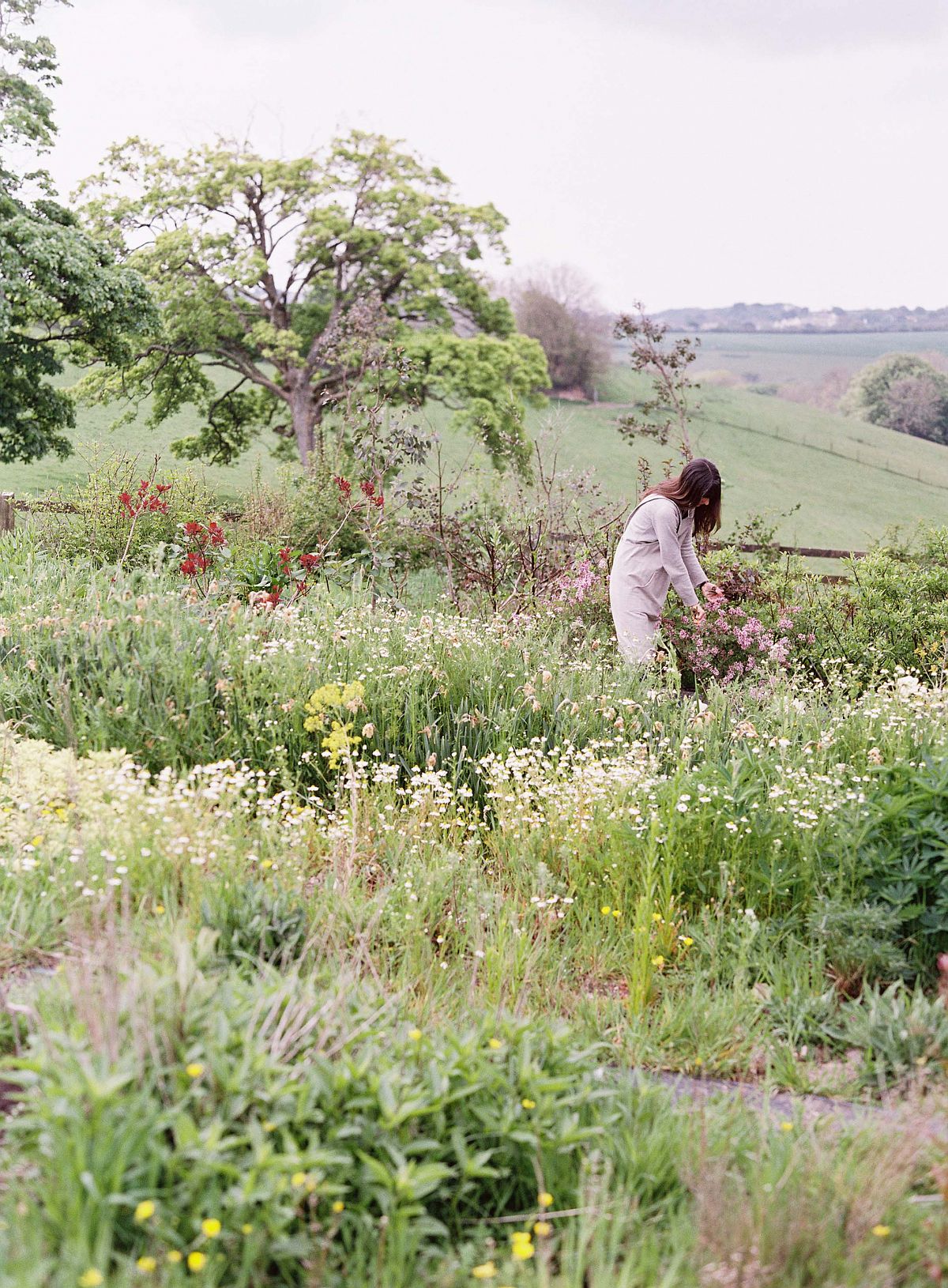
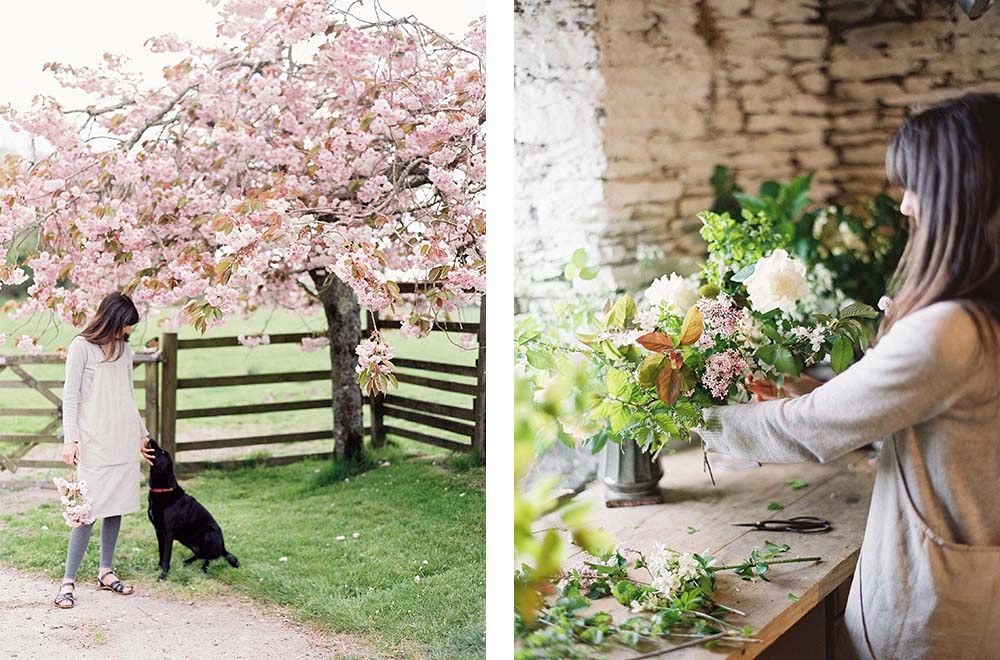
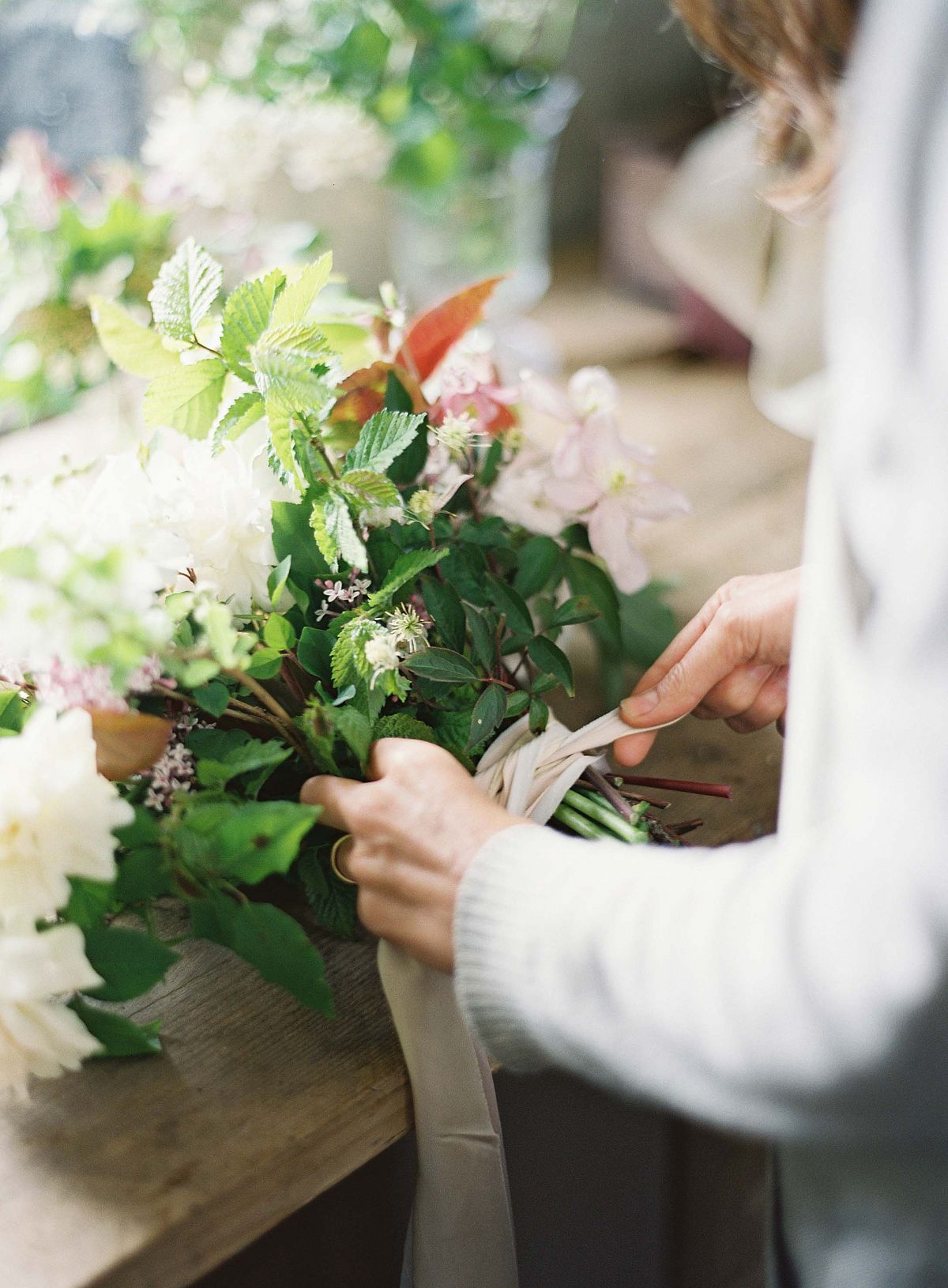
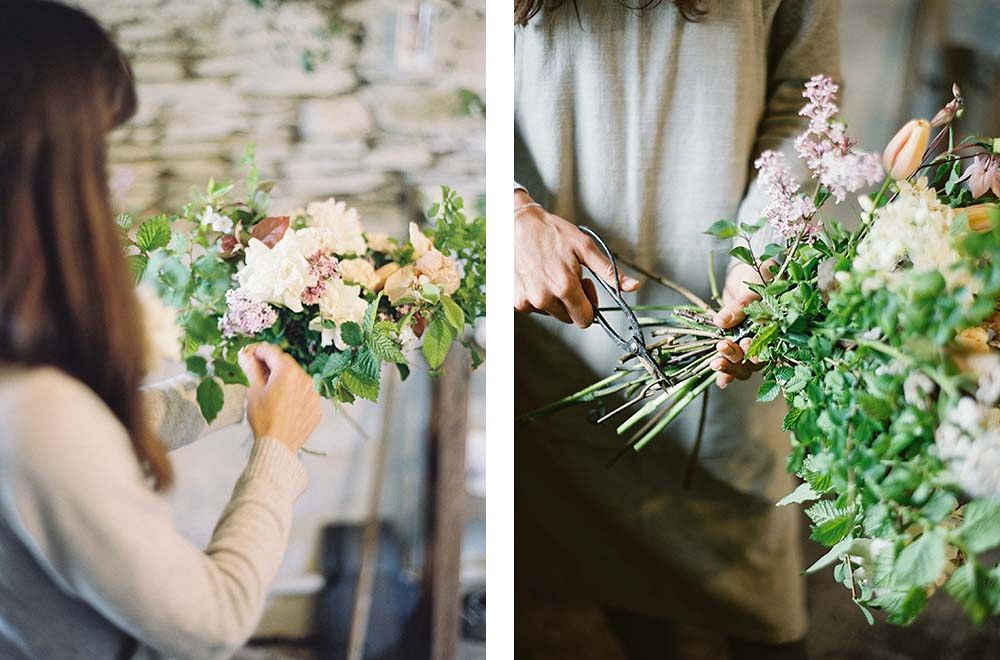
1. How does your practise involve organic/natural practises and/or materials?
The Garden Gate Flower Company: We started to grow our own flowers because the flowers available from most wholesalers were all the same, too rigid and didn’t look natural enough for the style we wanted to achieve. Alongside defining an aesthetic we also wanted to grow flowers with integrity. Much of the international flower market has a big carbon footprint, being shipped from less well-regulated areas of the world, where it is difficult to trace the provenance of the flowers. We wanted to grow flowers which reflected the landscapes and seasons in which they are grown, and so we grow the majority of our flowers organically on Becca’s parents’ farm, near Fowey.
2. Can you roughly outline your workflow for me?
Our work really varies seasonally and day to day. In winter we take most of our enquiries and do most of the consultations for the following year’s wedding, much of our web-site updating and planning for the garden will take place in winter. Spring is so busy with all that needs to be done in the garden and finalising wedding details. Early enquiries can have bulbs, for example planted specifically. In late spring and summer, we split our time between admin, the garden and the actual weddings themselves. So, for a Saturday wedding we will pick our flowers on the Thursday before, first thing in the morning. We then carefully select the flowers for the bride’s bouquet and portion out the rest into larger and smaller arrangements, or reception and church flowers, depending on the wedding. We will build any larger arrangements or instillations on site, so we work out what we will need for this too. On Friday, we make the bride and bridesmaids’ flowers first, and then move on to the rest. We will then carefully pack the van, for delivery early on the Saturday morning.
3. How many hours do you think roughly go into one of your pieces?
The time spent is so hard to quantify as we grow our flowers and arrange them, the time spend is so spread out. Some days time flies in the workshop, and we can make a bride’s bouquet in under an hour. Other times it takes longer, it sometimes depends how inspired we are. It is all a creative process and difficult to pin down.
4. Why do you choose to work for yourself and what do you love about the work you do?
Being self-employed means we are able to be very flexible over what work we choose to do, what work we target and also how and when we spend our time. The financial pressures of being self-employed are balanced by the flexibility we have, as Becca and I both have young families. The greatest benefit is working with other creative people on photoshoots and creative projects, which is always really inspiring. We have worked with Sian from Lancaster and Cornish over the past few years where Sian has used our flowers to dye ribbons,we often work with the same photographers and venues too. Being able to travel for work is fantastic as we get to see and work in places we never thought possible.
5. What inspires you about Cornwall?
Cornwall has an undercurrent of independent minded creative energy which is lovely to be a part of, from having lots of independent shops, designers and artists to outdoor theatre and local community carnivals. Cornwall’s gardens are amazing and always inspiring in terms of design and the plants they grow. Most of al, the landscapes of Cornwall are so diverse, with cute fishing villages, windswept moors and ancient woodlands to take ideas from. Cornwall’s beaches and craggy coastline never fails to impress.
6. Why should people look to commission work from/buy from Artisans like yourself instead of mass market?
High street florists often don’t have the diversity of flowers we do. We love the natural wild look you just can’t buy en-mass. Our roses are all varieties which smell amazing and are quite tricky to grow and transport, so never make it onto the wholesaler’s lorry. We forage for autumn foliage, spring hedgerow flowers and honeysuckle on the farm, which makes all of our arrangements unique and totally in keeping with the season and our surroundings. The bespoke service we offer means our customers always get lots of good advice and a personal service they just don’t get elsewhere. We have time to spend really listening to our brides and work together with their ideas to create a personal and unique floral theme for their wedding. Using locally grown flowers is always more environmentally friendly and will boost the local economy too. Cornwall is such a beautiful place and supporting local artisans helps to keep it a creative and vibrant place to live and to visit. Artisans and crafts people are passionate about what they do and I feel that love is embodied in the items they produce. They say money can’t buy you love, but in a round-about way, it can.
STATIONERY
Artisan: Myrtle & Co.
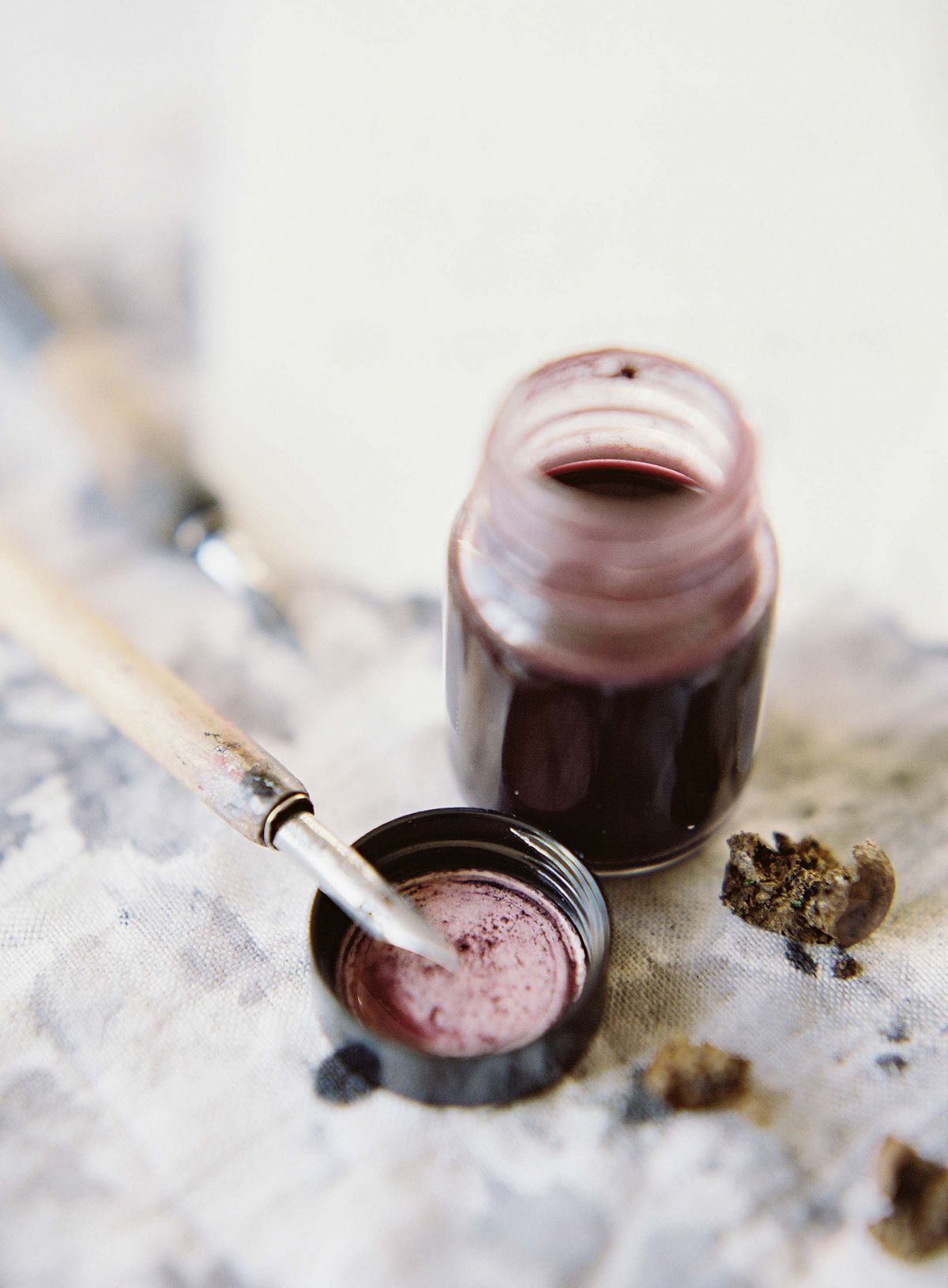
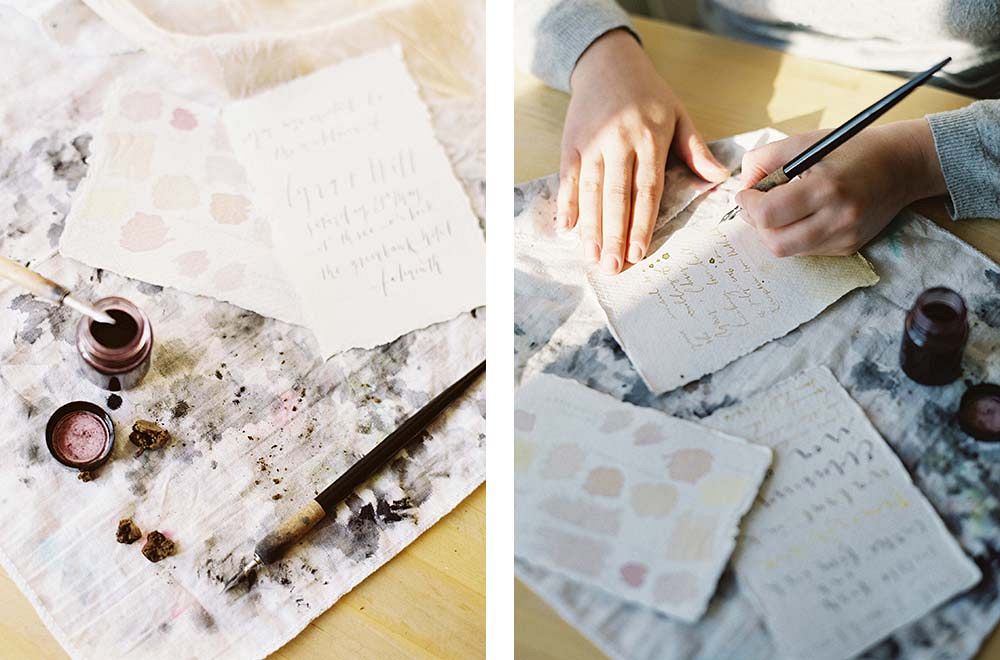
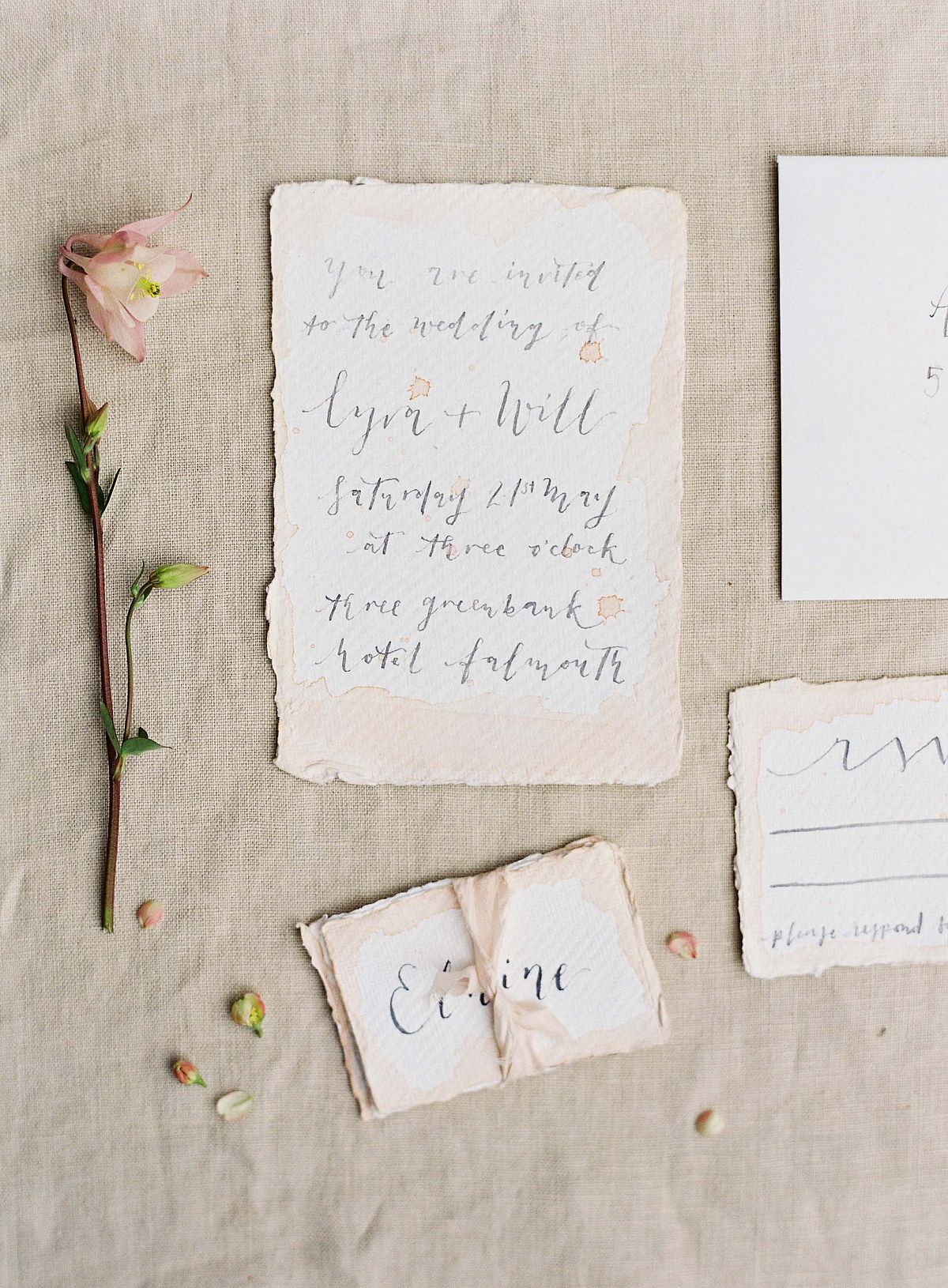
1. How does your practice involves organic natural practices or materials?
Myrtle & Co.: I try to use natural traditional inks and sometimes make my own, for this shoot I used iron gall ink and ancient ink used on the magna carta and the Lindisfarne Gospels. It is made from a gall wasp nests found on oak trees and the ink stinks a bit! I also have inks made from turmeric, walnuts, elderberry and cuttlefish.
The paper I used for this project is by Khadi, it is cotton based, made from wastage from the Indian rag trade and doesn’t involve harmful chemicals so the waste water can be used to irrigate crops. Finding suppliers with an ethical and environmental leaning is important not just to me but I more and more customers ask if the paper can be FSC standard or recycled.
2. Can you roughly outline your workflow?
I start off with the wording from the client then what styles they are interested in – old English or classic copperplate to modern relaxed styles of lettering, and then I draw up some examples of what it could look like. Then colours and papers are sampled and finally I write. I also work closely with a local printer who does screen printing, digital and foil blocking.
3. How many hours go into a piece?
This depends very much on the amount of words I have to write and font style used – elaborate gothic lettering can be very time consuming where as modern loose scripts are slightly quicker but I usually get an aching hand no matter what!
4. Why do you choose to work for yourself what do you love about your work?
I get most satisfaction working with my hands and not being on a computer all the time, which was a big part of why I decided to work for myself. I love the creative freedom and control I have over my own work and the variety of things I have written from a eulogy to a horse to a map of a make believe world..
5. What inspires you about Cornwall?
The light, the space, the sea THE SEA!
6. Why should people look to commission work from artisans like yourself instead of the mass-market?
Calligraphy contains a level of intimacy that digital communications don’t, it engages the visual mind, leaving the receiver with a tangible item to treasure.Emily Dickinson said “a letter always seemed to me like immortality”
GOWN
Artisan: Claire Heddon
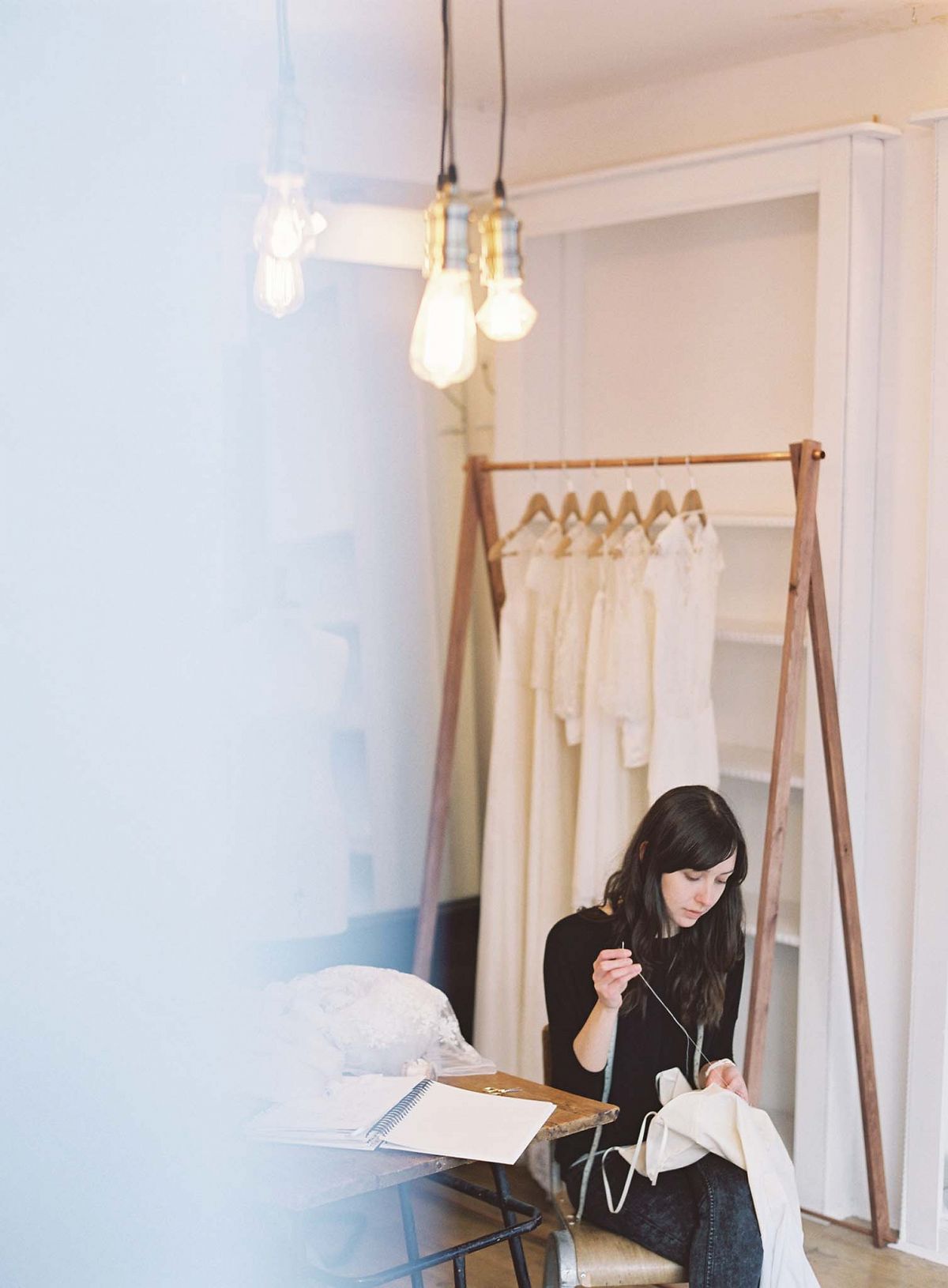
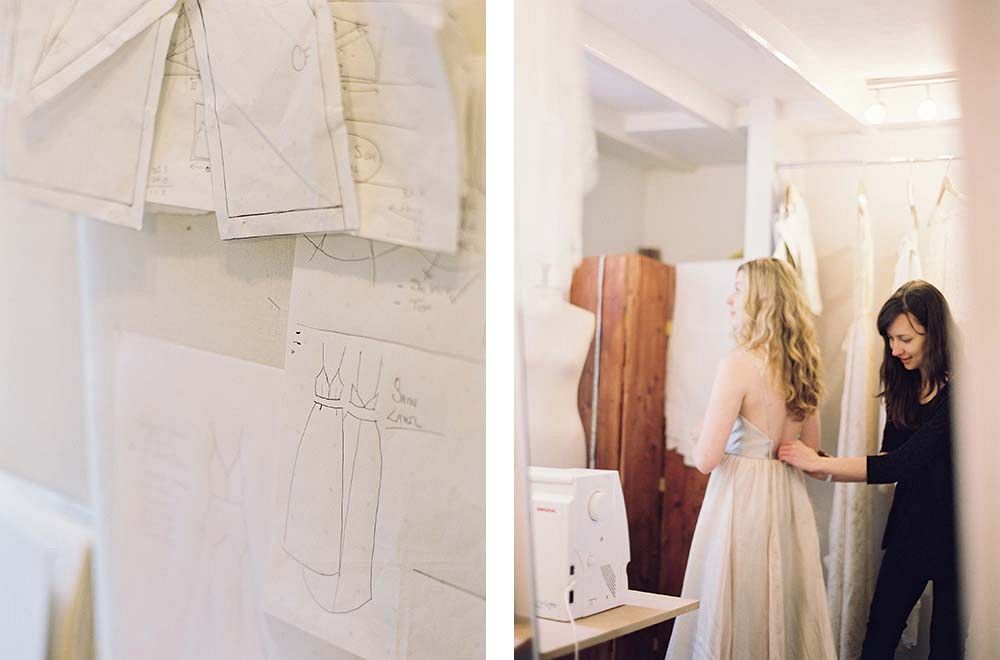
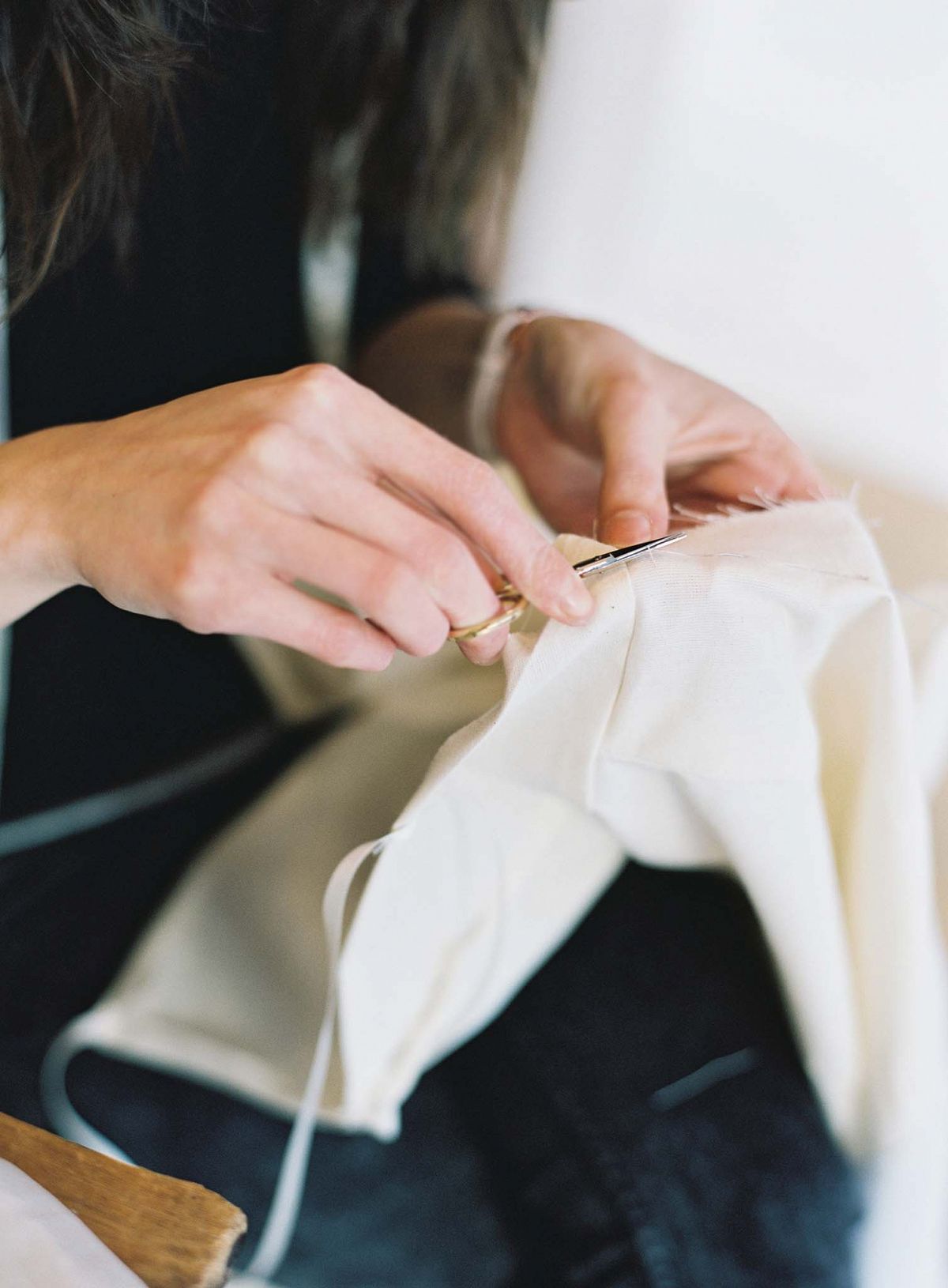
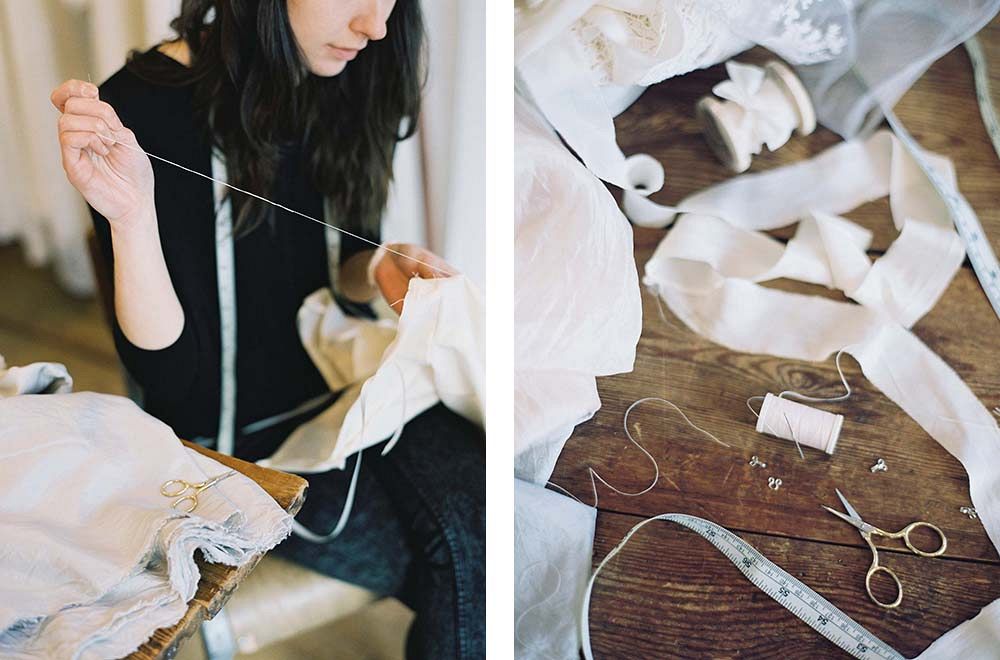
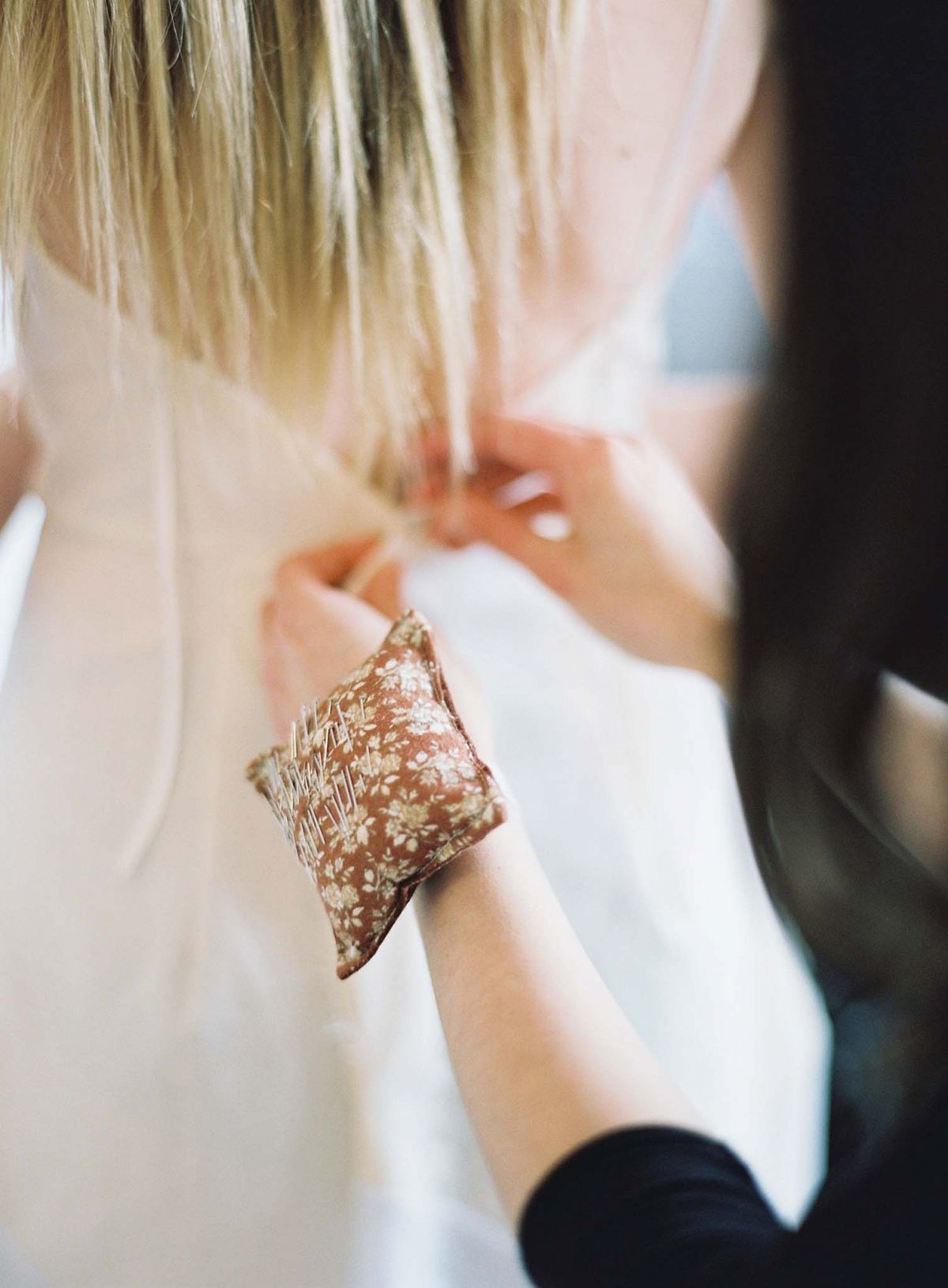
1. How does your practice involves organic natural practices or materials?
Claire Heddon: “All silk fabrics used in my studio are organic, eco-friendly and fair trade. This starts at the very beginning in the fields of Mulberry bushes, all the way through the process to the workers in the mills. Only empty cocoons are used for reeling the silk fibres and harmless chemicals are used for boiling, twisting and weaving the fabrics. I am incredibly passionate about promoting eco-friendly products and processes within the textile industry. The silks are absolutely beautiful to work with, are that bit more special and much better for the environment.
2. Can you roughly outline your workflow?
-All wedding gowns and separates are handmade by me in my studio in Cornwall, with delicate couture techniques to make sure your gown isn’t just any gown but something you can treasure for generations to come. Each step is taken with the utmost care, hand finishing a silk Habotai lining, adding a beautiful row of lace covered buttons or creating a structured inner corset, are all specialist techniques which make your gown something to remember.
3. How many hours go into a piece?
-There will be roughly 60 hours of work in creating a wedding gown. I’ll start by gathering inspiration and sketching, then I’ll develop the design by creating several toiles (mock up garments) and start fitting to a body, making sure the fit and design is perfect. There is something quite special about a small design studio. I know exactly where everything has come from, I see everything through from beginning to end and it means everything that is created has that extra special care before it leaves the studio. You also know exactly where your product has come from, where it’s been designed, what materials were used, what went into creating it and making sure it’s perfect before you take it home.
4. Why do you choose to work for yourself what do you love about your work?
I love this idea of nurturing family and community by passing on a piece of art, as well as a memory, down the generations. It a piece of art but it’s wearable, I find that so incredibly special and it really should be encouraged. Making garments is an incredible experience, a wedding dress is an incredibly special garment, possibly the best anyone would wear in their lives and it’s amazing to be a part of that journey with someone.
5. What inspires you about Cornwall?
-Cornwall is an incredibly inspiring place to live and work in. I have been lucky enough to grow up surrounded by the sea and beautiful landscapes, which has always fed into my creativity. It has always been famous for it’s art and being surrounded by such talented artists is a beautiful and inspiring thing.
SILK RIBBONS
Artisan: Lancaster & Cornish
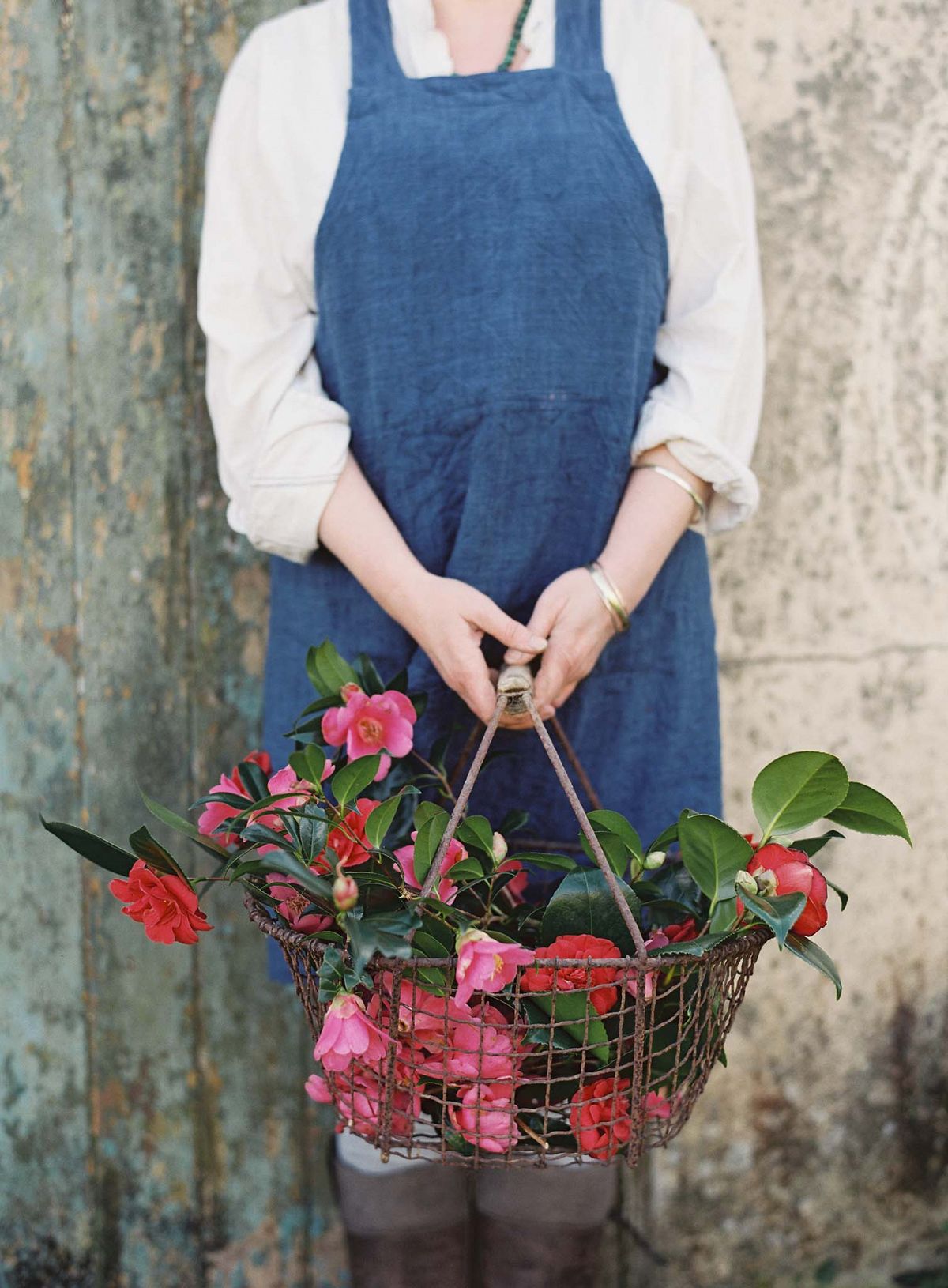
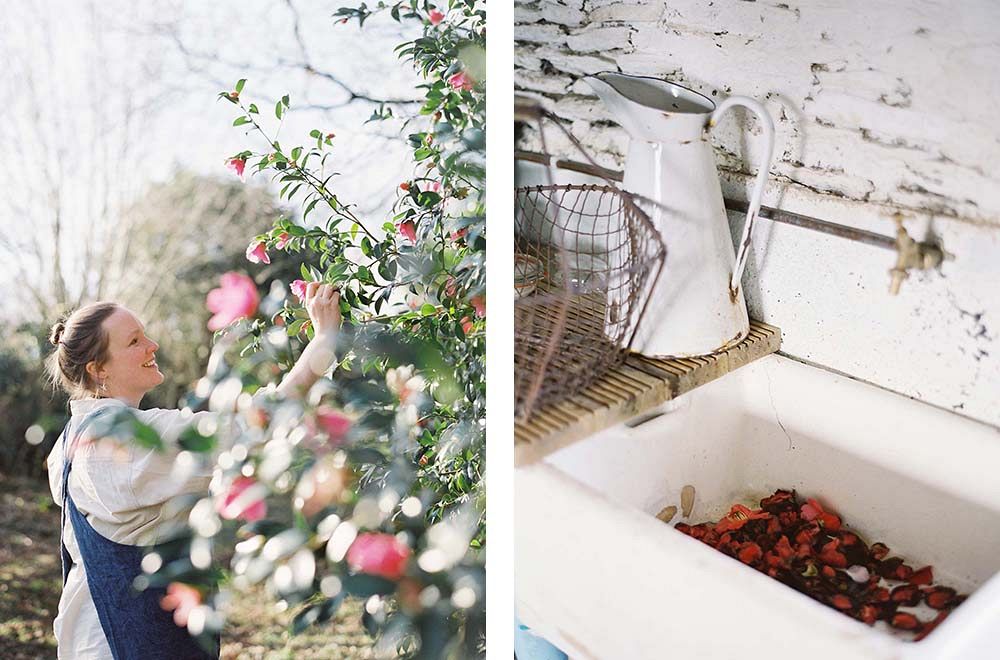
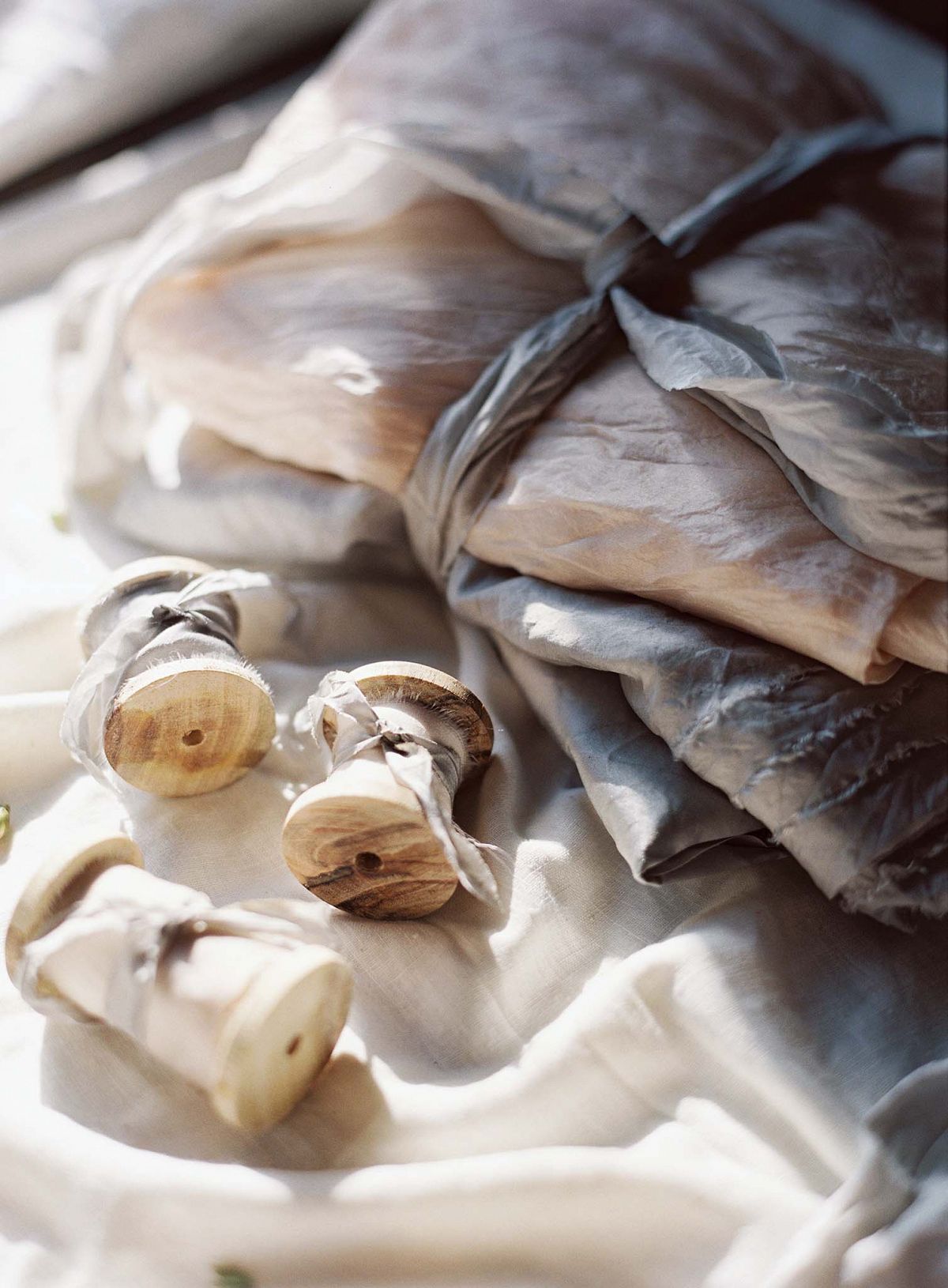
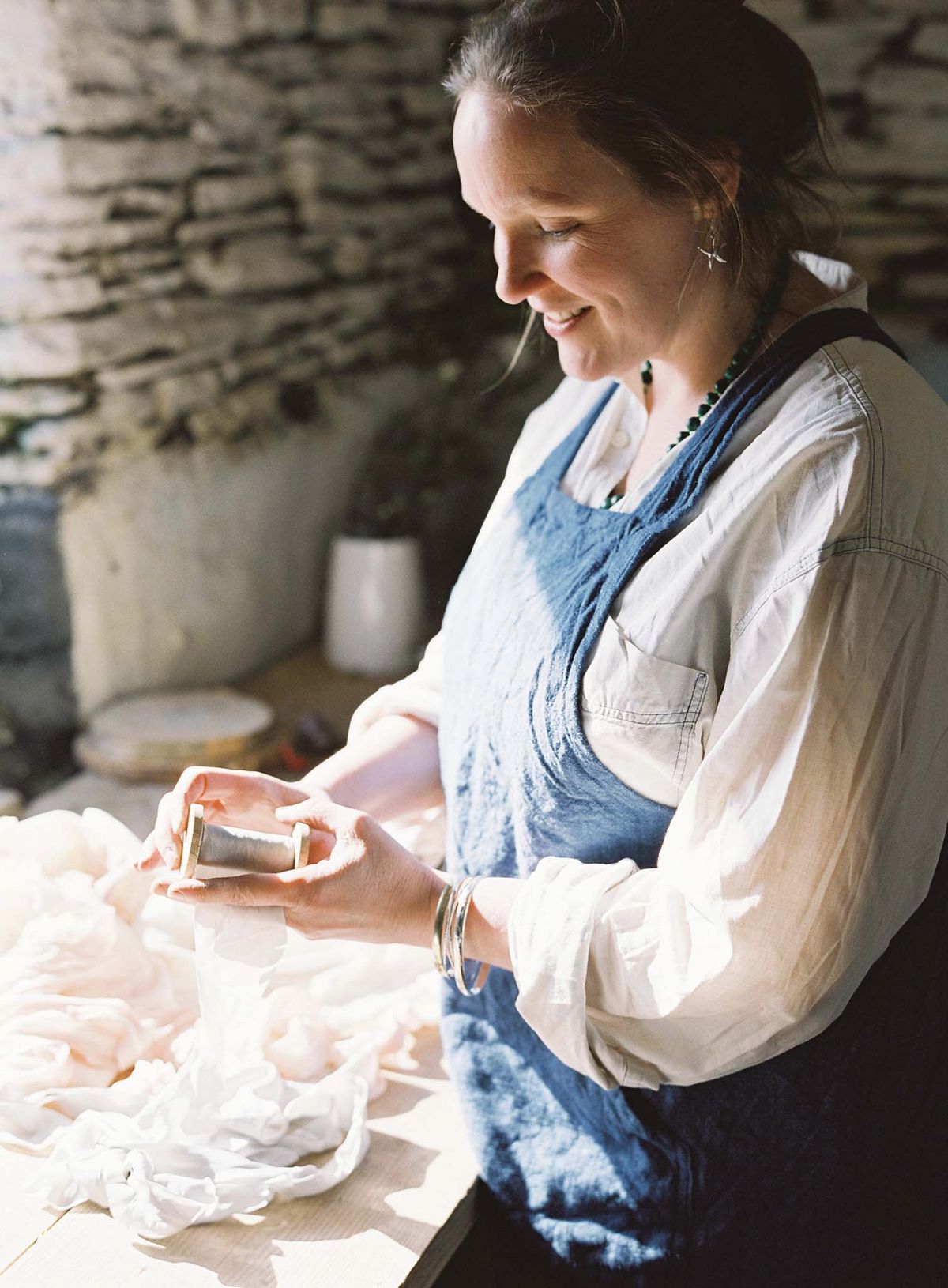
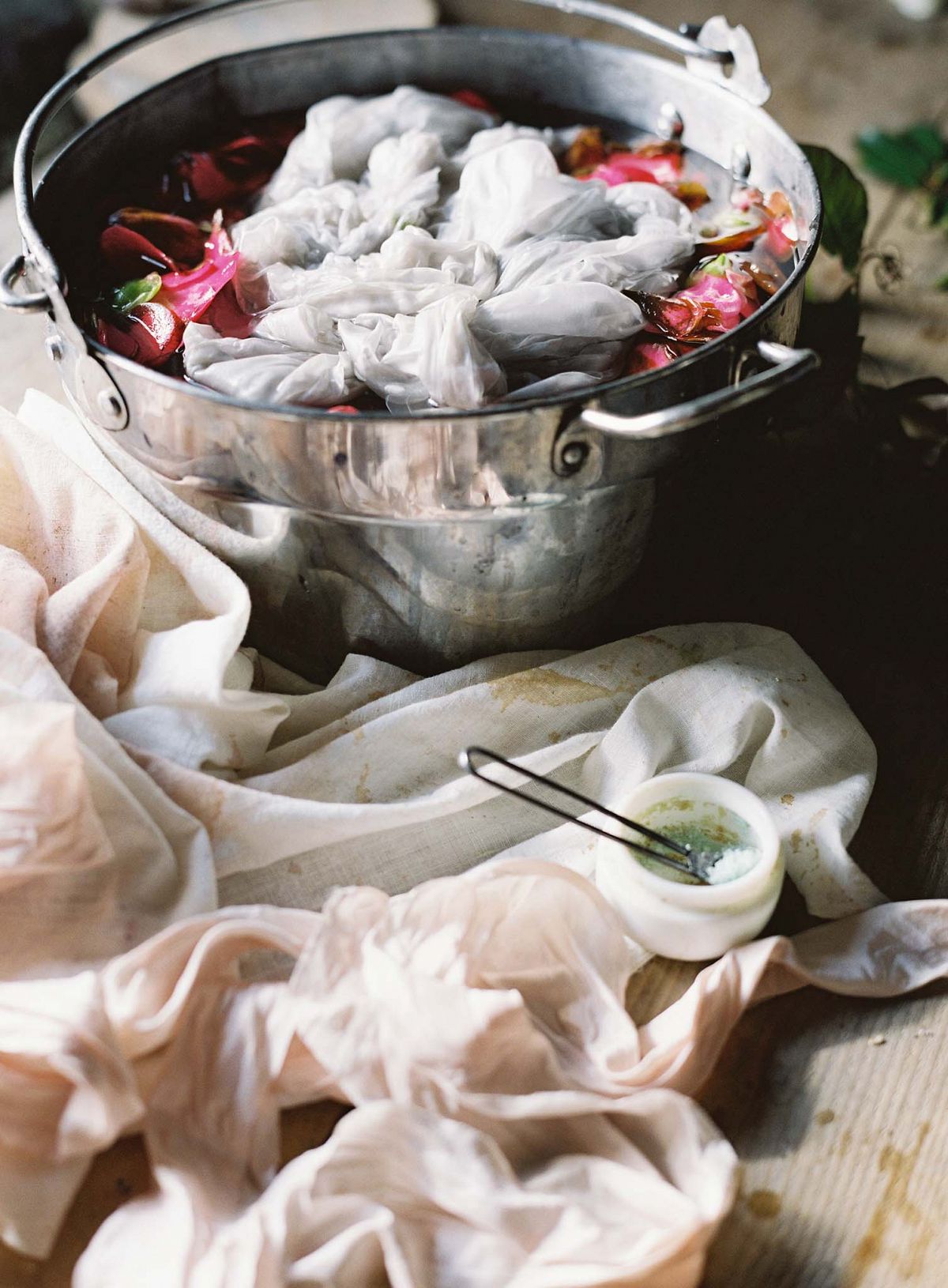
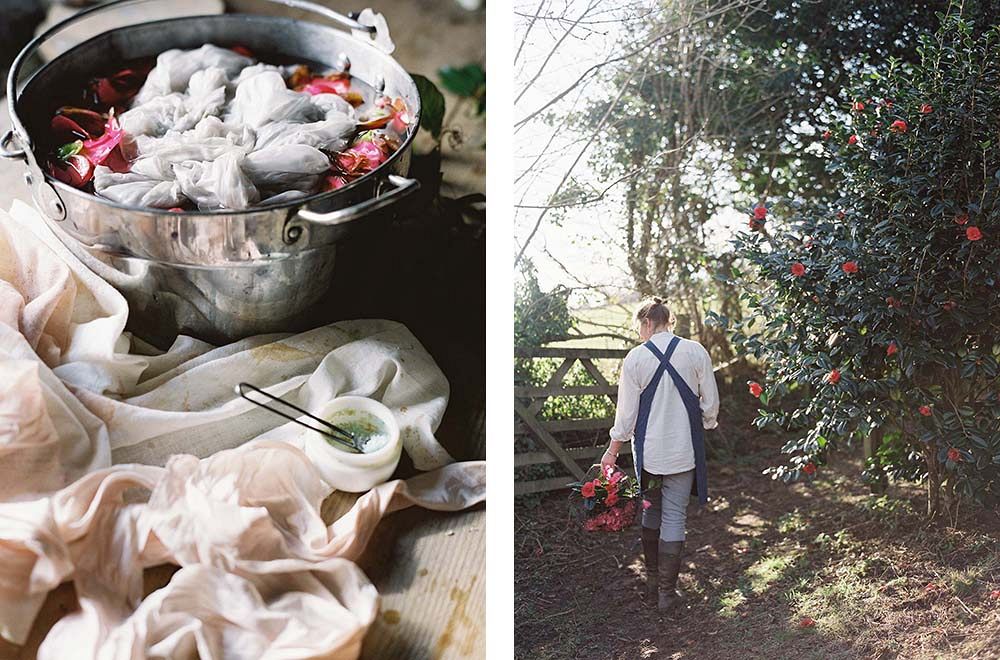
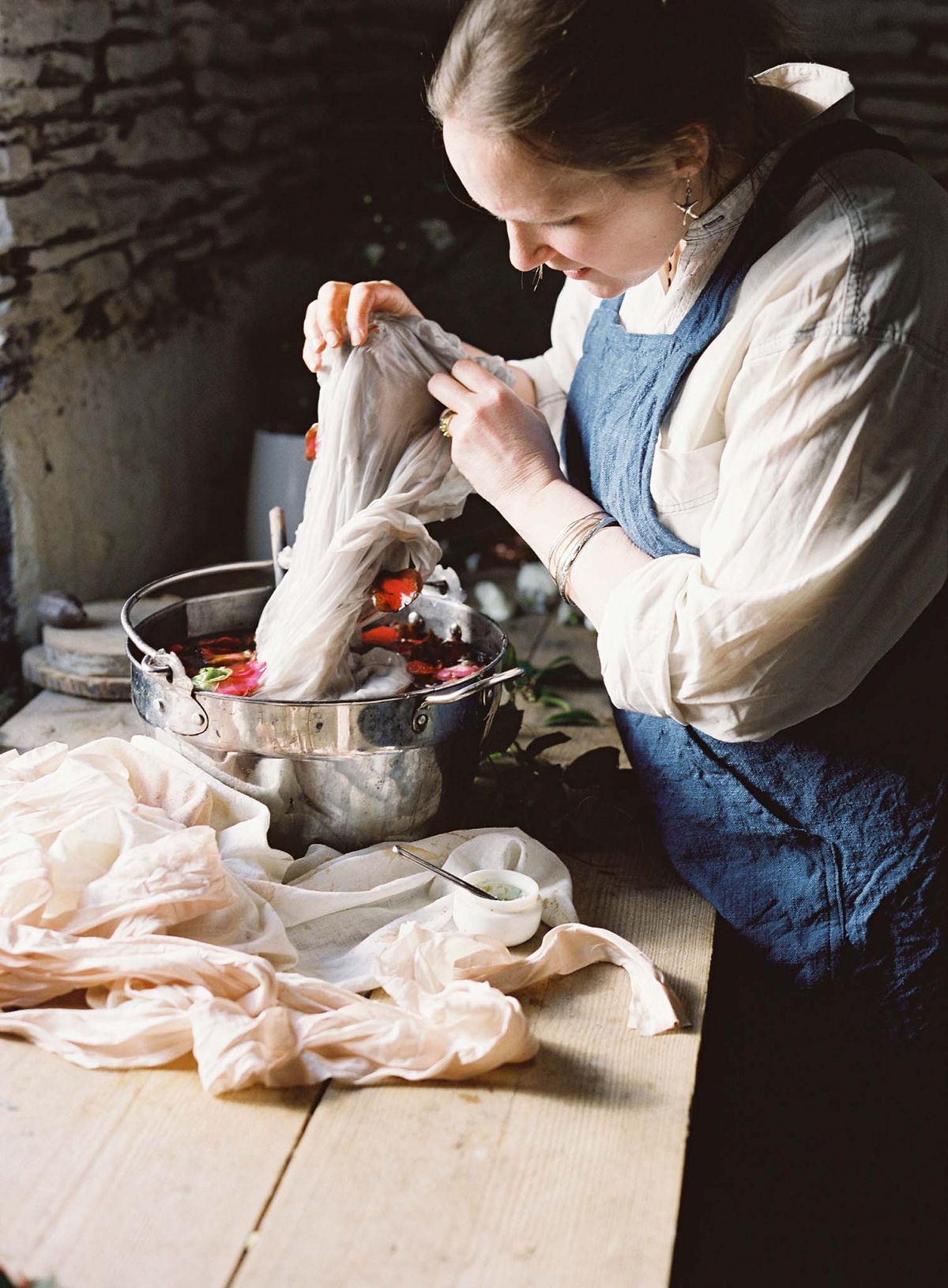
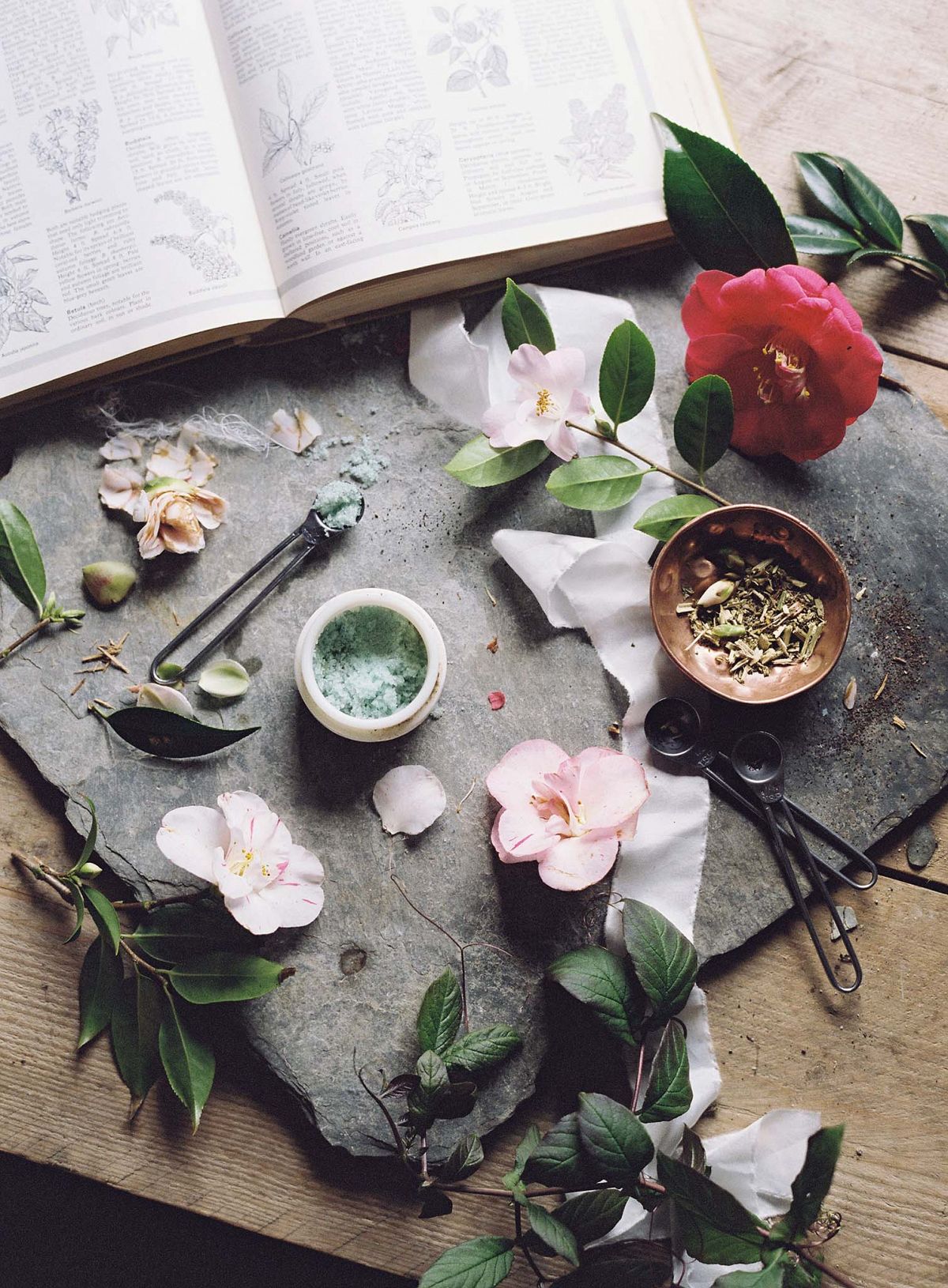
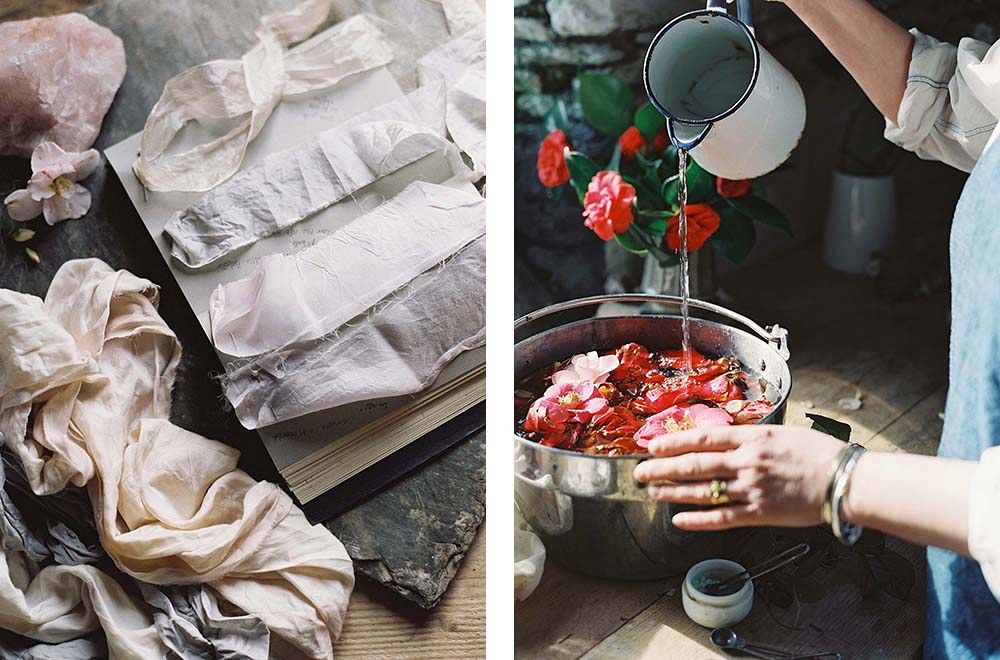
1. How does your practise involve organic/natural practises and/or materials?
From Lancaster & Cornish: All our raw materials are natural fabrics – bamboo and pure silk are sourced from fair trade organisations with short supply chains, organic certified where possible
Natural dyeing an ancient art, use of organic raw materials again where possible, or if not fair trade
2. Can you roughly outline your workflow for me?
Collection of natural dye plant materials – in this case the Camellias – obviously a very seasonal activity for some plants, others are available year round (pre-ground dye material such as Madder root are bought from fair trade sources).
Preparation of fabric – pre-wash to remove residues from the manufacturing process and prepare for dyeing.
Dyeing – prep of dye bath, modifiers (mordants)
Drying – aim to dry naturally outside, where possible (ha ha in England) – my studio usually draped with lots of drying silks
Hand fraying and turning into ribbons
Ironing
3. How many hours do you think roughly go into one of your pieces?
Very much depends on the volume of the fabric
For this project, dyeing metres of fabric, around 2 days
4. Why do you choose to work for yourself and what do you love about the work you do?
Creative freedom
Express individuality
Love being connected to nature and the seasons
Desire to harvest colour from nature
Experimenting and surprise results!
5. What inspires you about Cornwall?
Creativity of individuals
Freedom of expression – less tied to the high pressure unsustainable fashion industry, allowed to be an individual
Remote from the rest of the country
The sea, the woods, the moors
6. Why should people look to commission work from/buy from Artisans like yourself instead of mass market?
Integrity of product
Knowing where, who and how it is made
Fair trade
Ethical
An heirloom piece – something to treasure, not a throw away item after the wedding day
Joy of working with creative, like-minded individuals and businesses



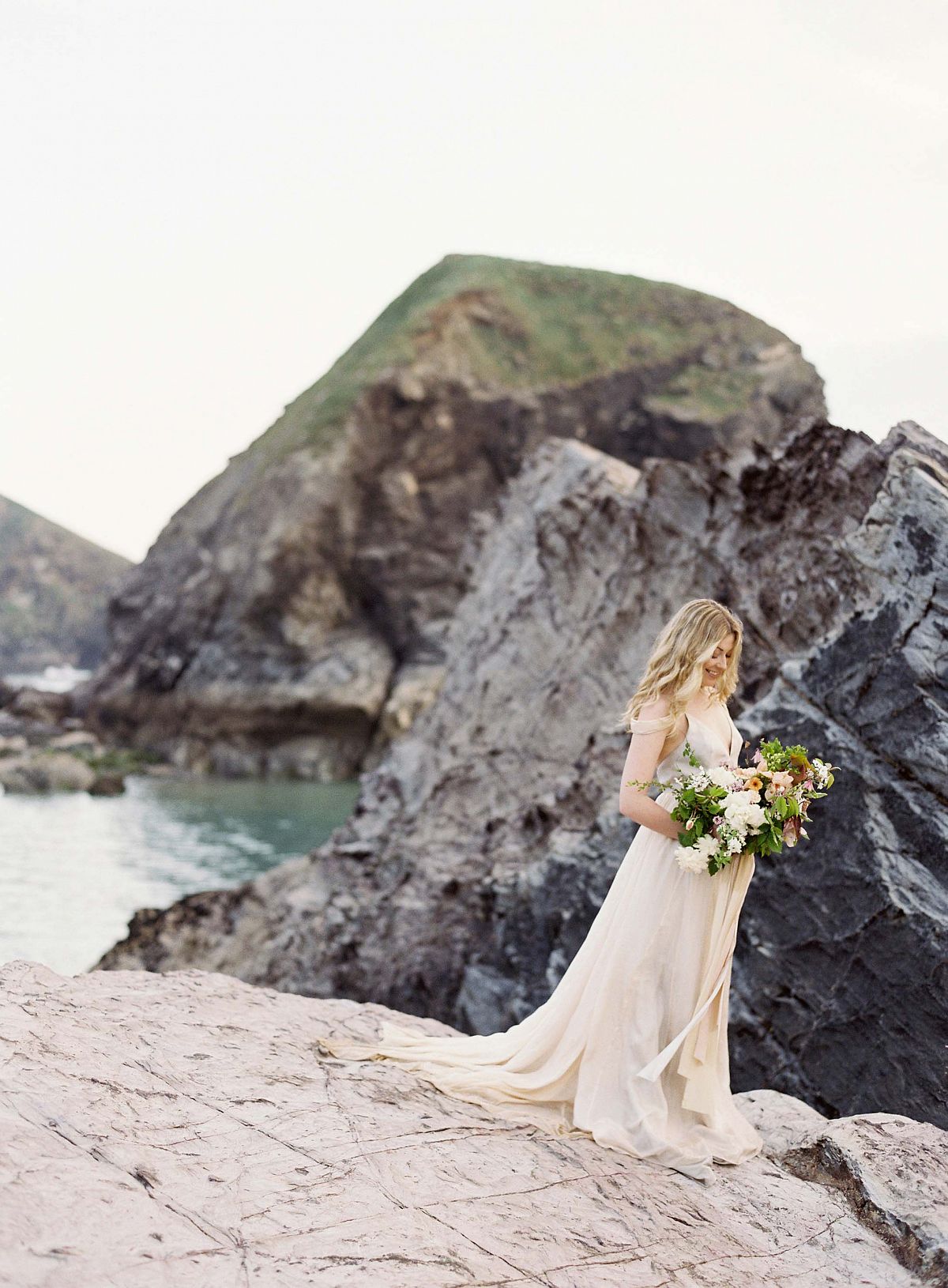

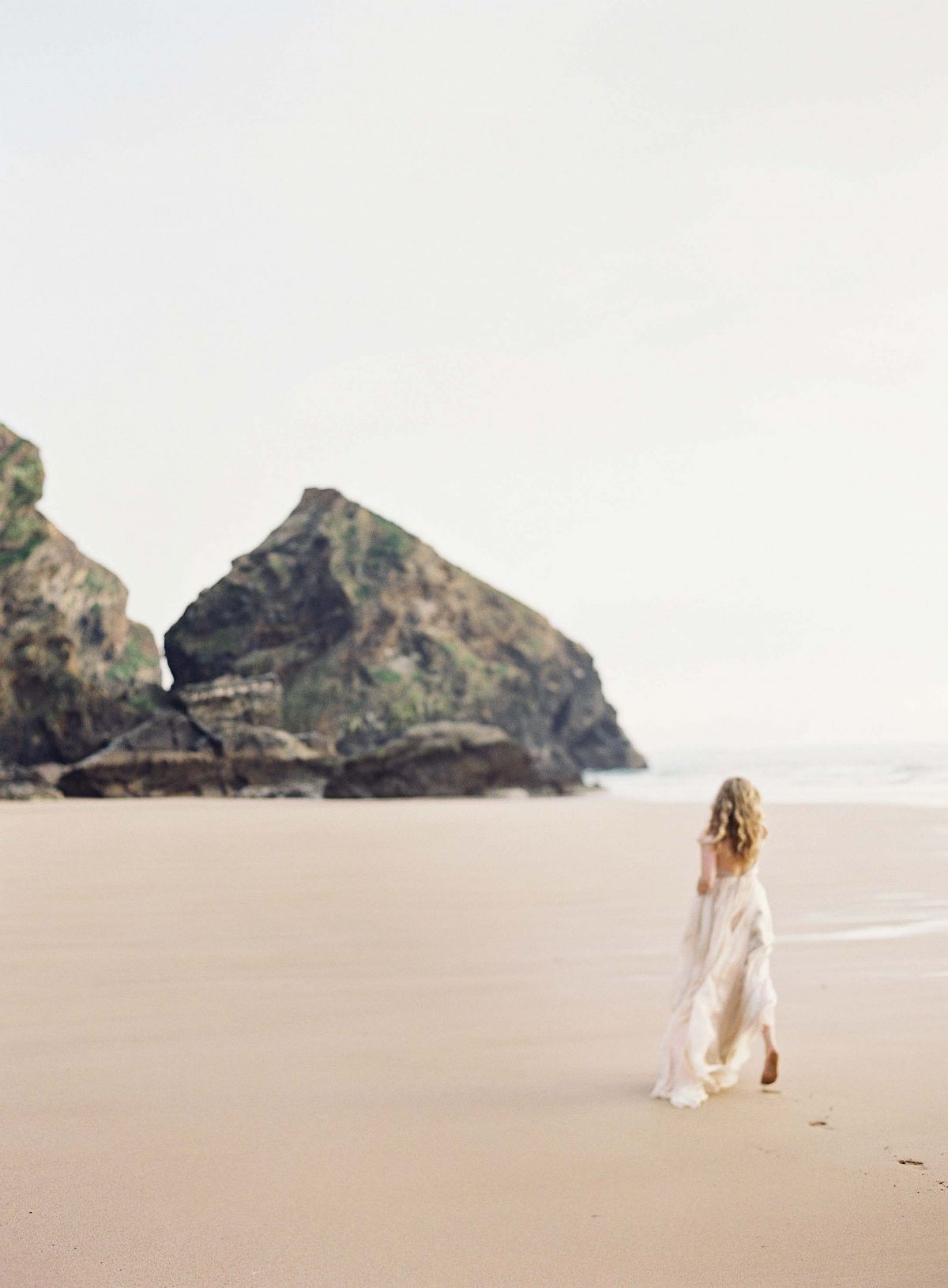

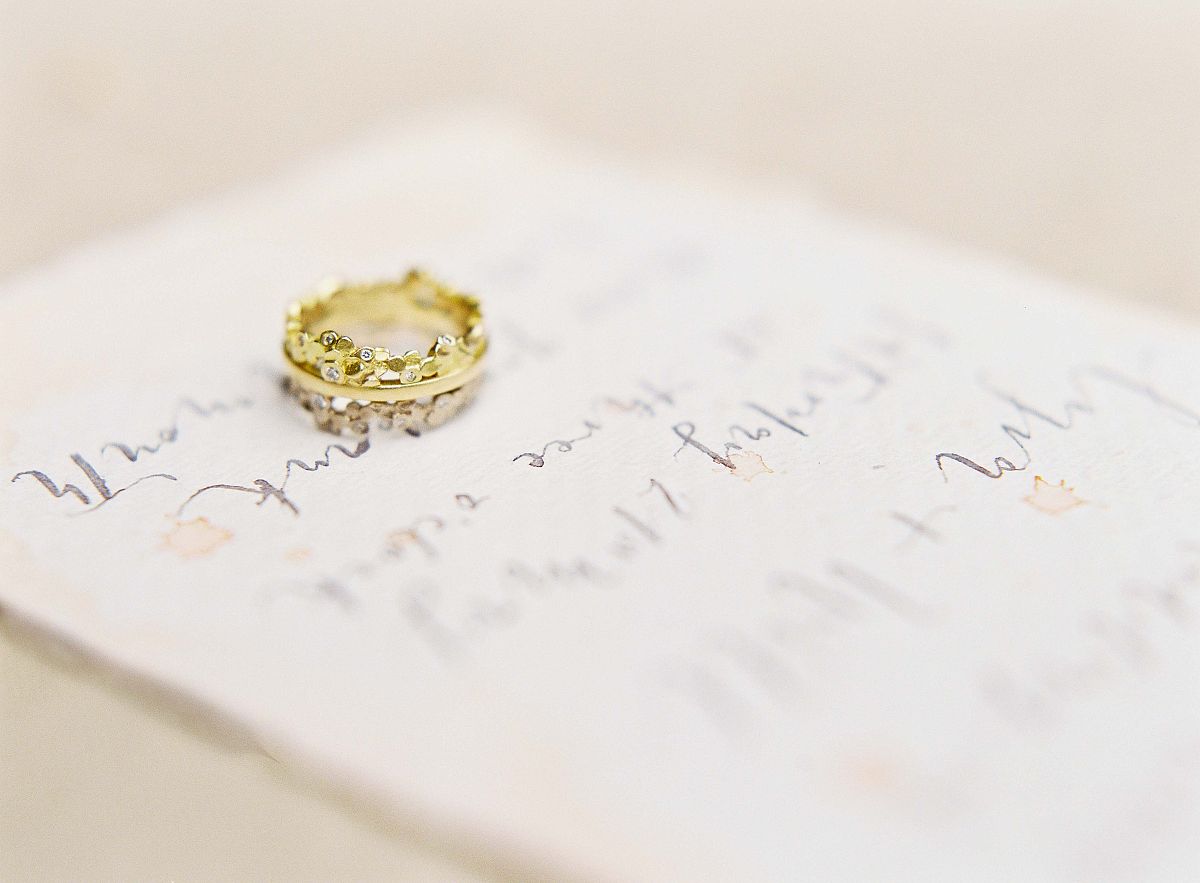
Vendor Details
Photographer & Stylist: Taylor & Porter | Film Lab: Richard Photo Lab | Floral Designer: The Garden Gate Flower Company | Dress Designer: Claire Heddon | Accessories: Mirri Damer | Hair & Makeup Artist: Stacey Cremin | Ribbons and Silks: Lancaster & Cornish | Stationery: Myrtle & Co | Model: Sarah Alexandra


